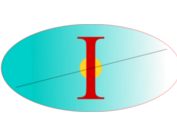Citation:
| hernandez2018first.pdf | 1.04 MB |

Abstract:
Absorption cross-section spectra for gold nanoparticles were calculated using fully quantum Stochastic Density Functional Theory and a classical Finite-Difference Time Domain Maxwell solver. Spectral shifts were monitored as a function of size (1.3–) and shape (octahedron, cubeoctahedron and truncated cube). Even though the classical approach is forced to fit the quantum time-dependent density functional theory at , at smaller sizes there is a significant deviation as the classical theory is unable to account for peak splitting and spectral blueshifts even after quantum spectral corrections. We attribute the failure of classical methods at predicting these features to quantum effects and low density of states in small nanoparticles. Classically, plasmon resonances are modelled as collective conduction electron excitations, but at small nanoparticle size these excitations transition to few or even individual conductive electron excitations, as indicated by our results.



